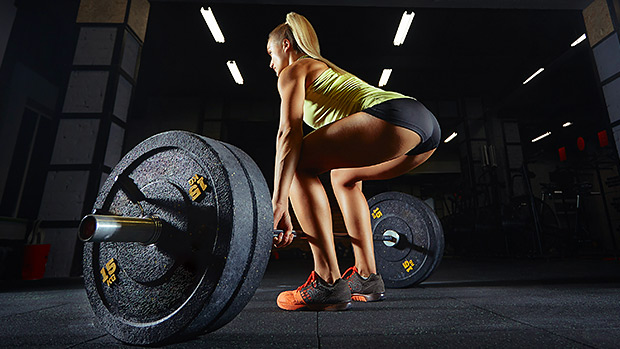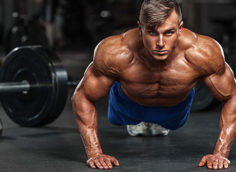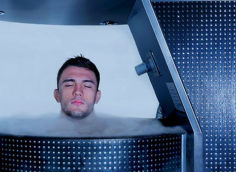If you tend to feel the majority of the load during squats and deadlifts in your lumbar spine instead of your legs and glutes, here are five steps you can take to create more anterior core tension and overall spine stiffness.
Sit on a ball or roller and grab something sturdy. Squeeze your knees to your chest and round your back. Now inhale through your nose to expand the back of the diaphragm. Exhale through your mouth. Focus on "breathing into" your lumbar spine. This will allow you to better brace your core (create tension). Do 1-2 sets of 6-10 breaths.
One of the best exercises for core stability? The deadbug. Unfortunately, it's often butchered. Here's how to do it effectively.
Start by lying on the floor with your back flat. There should be no distance between the floor and your low back. Feel free to lift your head up and tuck your chin. Creating a double chin will take the stress off your neck, allowing you to push your ribs down towards the hips and "lock" the position in.
If you're unsure of your rib positioning, simply exhale hard. Exhalation actively pushes the ribs down.
Since your lower back is on the floor, you're titling your pelvic posteriorly. "Bring your buckle to your chin" as Tony Gentilcore says. Your legs and knees should be at about a 90-degree angle.
Now, your goal is to move your limbs without changing the tension in the core. Your top priority is to keep the core "locked in" while you're extending and alternating your arms and legs.
Be sure to exhale each time you extend and keep that core locked in. Go for quality, controlled reps and focus on feeling tightness in the core. Aim for 1-2 sets of 6-10 reps.
Another great exercise for developing core and lumbopelvic stability is the birddog.
Assume an all-fours position and keep your spine neutral. Brace your core. From here, your goal is twofold. First, don't allow your low back to hyperextend. Second, keep your hips square and don't allow your hips to dip while performing the movement. Do 1-2 sets of 6-8 reps and exhale during each rep.
By increasing activation at the hips, you're learning to disassociate your hips from lumbar movement. Choose any glute bridge or hip thrust variation.
You can position either your feet or your upper back on a box.
Push from your heels and focus on contracting your glutes. Do 1-2 sets of 8-12 reps.
Most people struggle with keeping their spine neutral. Sometimes they aren't even sure if they brace their core or not while performing squats and deadlifts.
Breathing at the bottom position of squats and deads – inhalation through the nose, exhalation through the mouth – creates tension in the core. Learning how to feel the tension there will teach your body how to create spinal stiffness.
In other words, you're going to brace and then breathe "behind the brace" which translates into increased core strength and reduced risk of lumbar spine discomfort.
How to Do It With Squats
Assume your preferred squat stance, corkscrew your feet into the ground, and sit in between your legs.
At the bottom position, inhale through your nose and exhale through your mouth. You should be feeling your core tighten with no sensation in the lower back. Come back up to a standing position and repeat.
How to Do It With Deadlifts
Assume your preferred deadlift stance, put the majority of your weight on your heels and mid foot, and push your hips back. Keep your shins relatively vertical to the floor.
At the bottom position, inhale through your nose and exhale through your mouth. You should be feeling your core tighten with no sensation in your lower back.
Perform breathing squats and deadlifts with a load which allows you to do 6-12 reps for 2-3 sets.
Sounds like a no-brainer, but many people overlook this point. When you decrease the weight, you're able to brace better and allow the lower body musculature to do the work.
Most people tend to overshoot the load on compound movements and allow their lumbar spine to take the tension off the hips and legs. So be sure to practice pristine form before adding more weight.





